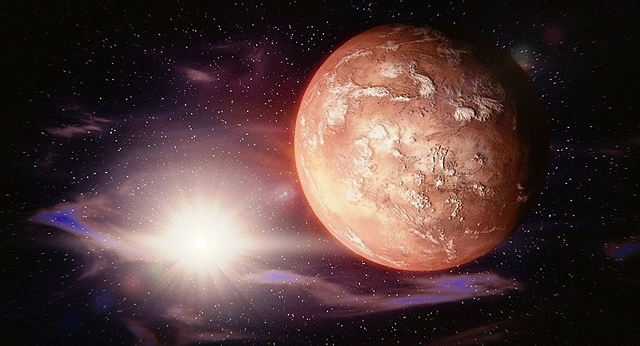
Everything You Need To Know About Mangalyaan 2, India’s Second Mars Mission
Following the success of its first Mars Orbiter Mission (MoM-1), the Indian Space Research Organisation (ISRO) is now preparing to launch India’s second interplanetary mission (Mom-2) to explore the red planet.
Jitendra Singh, Union Minister of State in the Prime Minister’s Office (PMO) that is responsible for the Department of Space, said in a written reply to a question in Rajya Sabha the configuration, objectives and scientific experiments of MoM-2 are yet to be formulated.
“A call for proposals through an Announcement of Opportunity (AO) has been made within India to seek proposal for scientific experiments for Mars Orbiters Mission-2,” Singh said. He said MoM-1 has completed 25 months in orbit and is presently functioning satisfactorily.
The AO document displayed on ISRO’s website states clearly that the organisation has planned to have the next orbiter mission around Mars and seeks proposals from interested scientists within India for experiments on board an orbiter mission around Mars. It outlines that the payload capability of the proposed satellite is likely to be 100-kg and 100W and states that the apoarion of the orbit is expected to be around 5,000-km.
Possible Objectives
- Among the most important tasks of the new mission will be to conduct experiments to confirm the presence of methane, which the AO document says is ‘yet to be confirmed unambiguously.’
- One of the objectives could be to conduct new measurements to quantify the loss of atmospheric water and carbon dioxide.
- In it’s AO document, ISRO states that the new Mars missions provide an opportunity to explore planetary evolutionary processes, how and whether life arose elsewhere in the solar system, and the interplay between geological and possible biological history. Therefore, the new mission is expressed to address questions related to these fields.
- MoM-2, ISRO has said, will possibly be fitted with a lander and a rover in addition to the orbiter. While the lander, it says, will focus on ‘in situ surface/subsurface probing’, the orbiters will study of the Martian surface and subsurface and serve as the communication link to Earth.
The French Connection
Media reports that have emerged in recent times suggest that India and France are exploring the possibility of working together on ISRO’s second MoM.
Among the 14 agreements that India and France signed during French President Francois Hollande’s two-day visit as the chief guest for Republic Day celebrations was a letter of intent on Centre National d'Etudes Spatiales (CNES) participating in ISRO's next Mars mission, expected around 2020. CNES is France’s national space organisation under the supervision of the French Ministries of Defence and Research.
"After India's Mars orbiter, the next step has to be a lander. A lander on Mars is not easy, but it will be interesting to undertake," NDTV had quoted the president of CNES Jean-Yves Le Gall as saying in January 2016.
His statement not only suggests that the negotiations on France’s role in the mission had already reached an advanced stage when the letter was signed, but also points towards the fact that the two agencies are planning to take a giant step forward, though it is only the next logical step. Till date, the United States is the only country to have successfully landed a mission on the red planet.